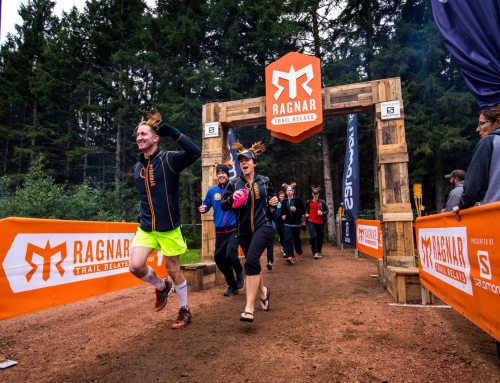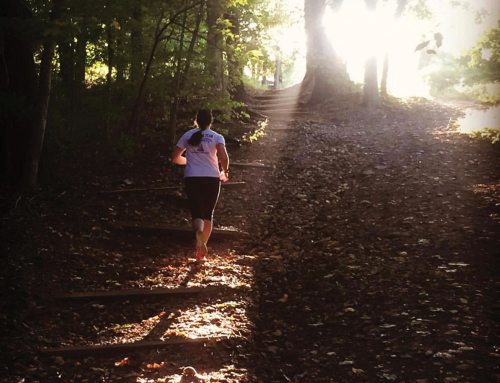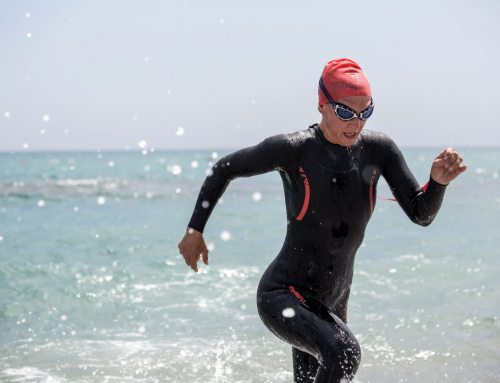By Michael Sharp
Runners by nature are very dedicated. That is why they get up at “zero-dark-thirty” in the morning to run before work. That is why they run regardless of the weather, and that is why they run through injuries despite advice to “take some time off.” Runners will plan their running schedules months in advance based upon when their next race is and what races need to be run to prepare or qualify for the big event. Vacations are planned around races, and holidays take a back seat to the training schedule. Every aspect of the training regime is calculated: long runs, speed workouts, hill runs, short run days (if there is such a thing), rest days, and weight workouts are all factored into the training equation. One aspect that is extremely important to runners but is often overlooked is core strength.
Your core is your base of strength around which every other segment of your body revolves. It includes the muscles of your trunk and abdomen, which support your spine and pelvis and form an anchor for your upper and lower extremities during movement.
During the running gait cycle, the core muscles should be tight, which keeps the body upright. Depending on the slope of the road, there may be a slight forward lean, but the body should still maintain a straight line from the ears, through the shoulders and the hips, and down to the ankle bone. The elbows should be bent to 90 degrees and held by the side. Your arms and legs should follow an old theorem: the shortest distance between two points is a straight line. What this means is that your arms and legs should swing forward and backward (in a plane from your ear to your hip), not side to side. A side-to-side swing is an inefficiency brought about by weakness of the core muscles, which results in more energy expended without moving you forward. Once the arm movement breaks down, the leg swing is soon to follow. The arms and legs move on an opposite, reciprocal pattern. This means the opposite arm and leg swing at the same time. This also means that as the arms tire, the legs will start to drag and vice versa. All of these problems may be traced back to core weakness. As the core breaks down, the arm and leg swing becomes less efficient. As a result, more energy is used to propel the body less distance.
This breakdown in core strength and resultant running inefficiency happens with all types of running but is particularly noticeable with trail running. There are several reasons. First, trail runs tend to be of a longer distance, not usually 5K. On runs of a longer distance, fatigue becomes a bigger issue, and there is a greater likelihood of the running form breaking down. Second, trail running is as much a mental game as it is physical. The longer distances take a huge mental focus to push through when the physical part gets difficult. Not to mention, trail running requires more mental focus than traditional running. The runner has the constant added mental difficulty of being aware of the terrain. Roots, rocks, trees, and water hazards require constant focus to avoid injury and complete the course. When physical fatigue sets in and the mental focus is busy avoiding terrain obstacles, it is very easy to lose track of running form if not concentrating strongly on technique. It is essential at this point in the run to have a strong core that is able to keep the body stable and hold proper running technique without having to concentrate.
Yoga and Pilates are excellent ways to focus on core strength while giving the added bonus of flexibility. One easy exercise to perform is a front plank. Perform these or similar core strengthening exercises several times per week to compliment your existing weight training and running program. Running is about more than just endurance; there is form and technique. Core strength is instrumental in having an optimal running gait; particularly when fatigued. By including core strength training into your routine, your running performance will surely benefit.
# # #
Michael Sharp, MS, LAT, ATC, is a Certified Athletic Trainer at The Athletic Performance Center (www.apcraleigh.com) where he focuses on sports rehabilitation for active individuals and endurance athletes. In his free time he enjoys training and competing in triathlons, trail races and ½ marathons. Mike can be reached at msharp@raleighortho.com.





